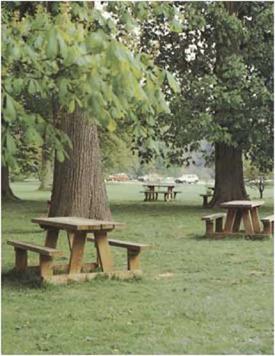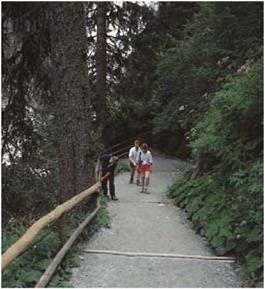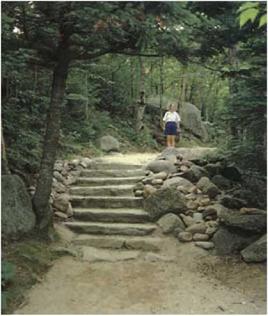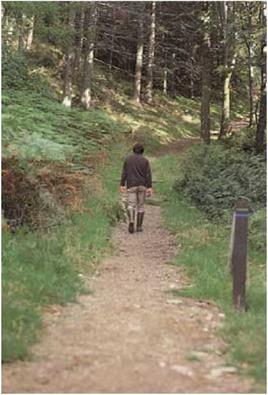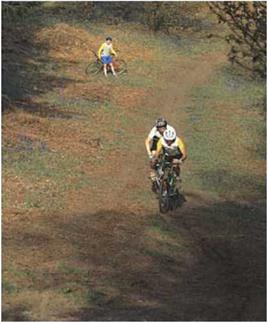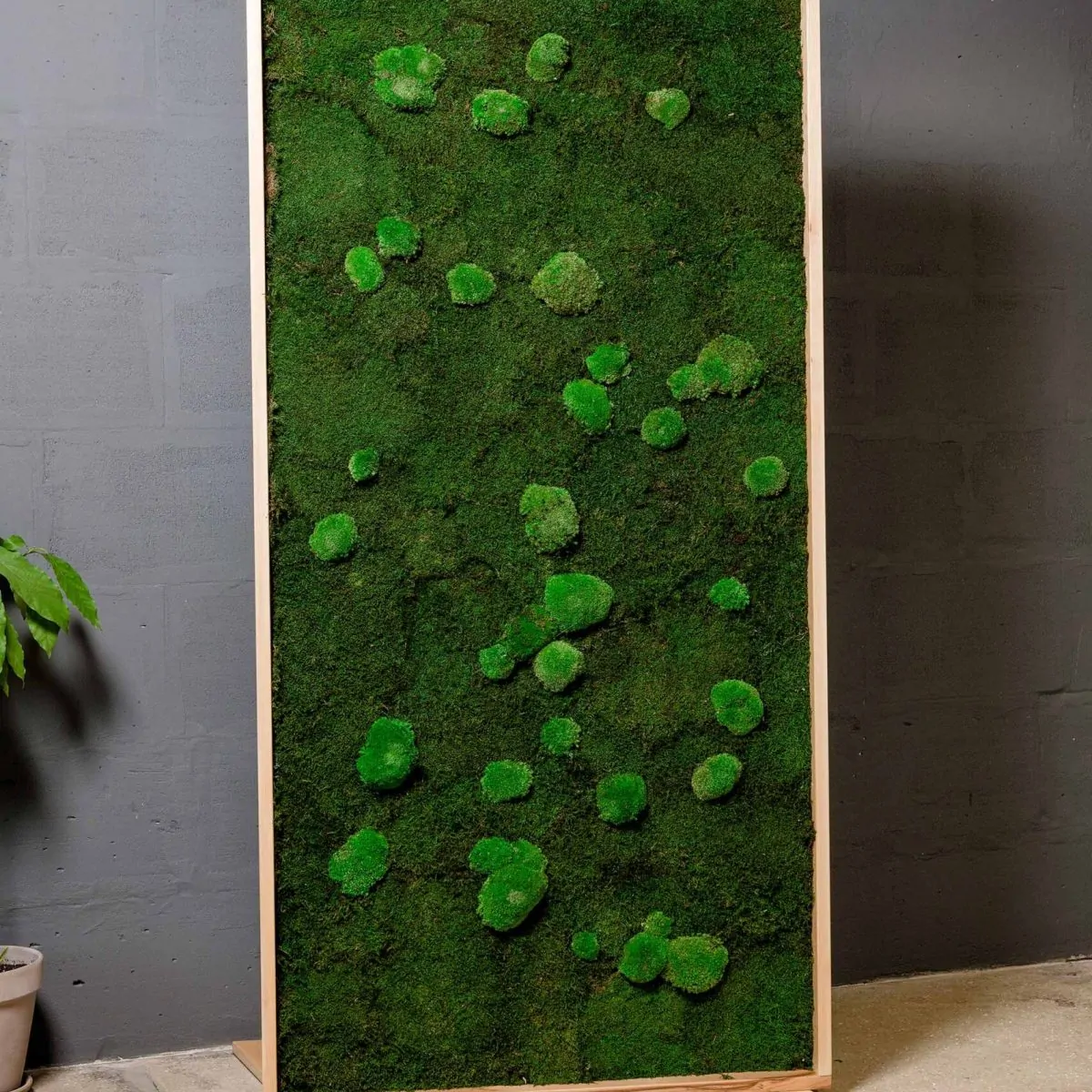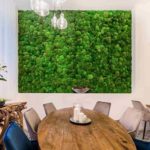These can vary from simple structures, such as a log laid across a stream, to composite steel and timber construction. The form to use will depend on the weight to be carried and the setting in which the bridge is to be erected.
In wild settings, particularly those with forests, adequate and functional footbridges can be fashioned from large logs
laid across the stream. The upper surface is sawn or chopped roughly flat to make a walkway. A handrail can be attached to one or both sides, being bolted directly onto the log. If the timber is durable or the log is very large, this type of bridge will last for a long time provided the supported ends can be kept dry. In such settings the weight of a few single-file walkers will be easily borne, but the bridge’s strength (including the handrail) should be checked by a qualified engineer.
Logs used in construction should be straight and as cylindrical as possible; the bark should be removed, and surfaces chamfered to create parallel sides for neatness. Chunky, large logs will always look better, and this will usually help to ensure that they are sufficiently strong.
|
18 These picnic tables sit on the ground. They can be moved to avoid site damage, but they can also be stolen unless they are anchored. They may also be more difficult to place completely level on uneven ground. |
19
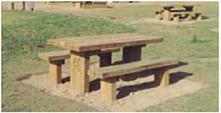 |
This is a well-designed example from
Britain’s Forest Enterprise. It has the right proportions, and is placed level. The unit has been set into the ground so that there are no obstructions to visitors’ legs or feet. An area around the unit has been laid with gravel to prevent wear and tear of the surface. Where there is easy access for people with disabilities the table-top can be extended so that a wheelchair can be set at it. Beechenhurst, Forest of Dean, Gloucestershire, England.
20
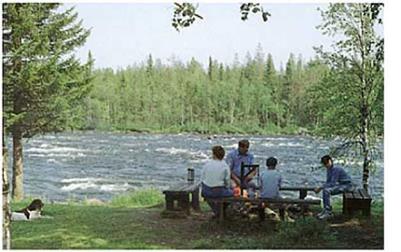 |
This family has taken the opportunity to light a fire and cook some food by the side of a river in northern Sweden. This increases the sense of being away from civilization, and can raise the quality of the experience.
21
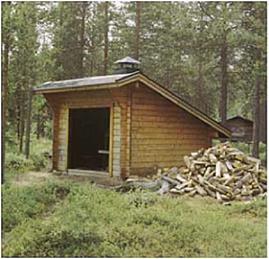 |
This shelter is an enclosed fireplace where cooking can also take place. It is well supplied with firewood. Such a shelter is ideal during the cold, dark winters of northern Sweden, where this example was found.
22
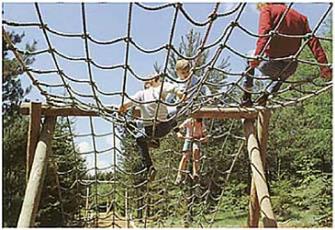 |
A climbing net provides a good example of motor play, helping the physical development of the bodies of growing children.
23
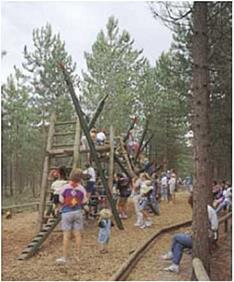 |
This example of an imaginative play structure is highly popular with visiting children. Parents are involved too, so that the whole family gains from the experience. Ringwood Forest, Hampshire, England.
24
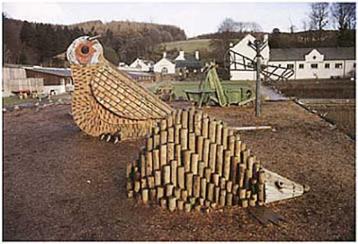 |
Part of a play area at Grizedale Forest,
Cumbria, England. Here sculptors have created play equipment based on
different kinds of wild animal. The pheasant is a slide. Note the extensive use of bark as a safety surface, retained by a log edge. This is an ideal surface to use in outdoor areas.
|
|
25 This wide, well-constructed path on a steep incline is well provided with cut-off drains or waterbars made from halfround logs with a channel cut into them. Krimml, Austria.

26
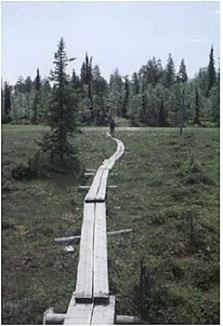 |
A boardwalk constructed of split logs cut from the nearby forest, borne on wide crosspieces to cross a mire in Finnish Lapland. All pieces are pegged together.
27
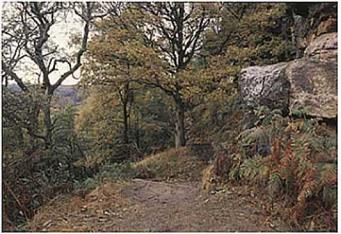 |
A good example of a path cut in a side slope on mineral soil. Re-vegetation of the
slope and a good, well-drained surface result in the path’s blending into the landscape very well.
|
|
28 A well-designed and well-constructed set of stone steps, which are blended into the boulder-strewn landform. Mother Walker Falls State Park, Maine, USA.
29
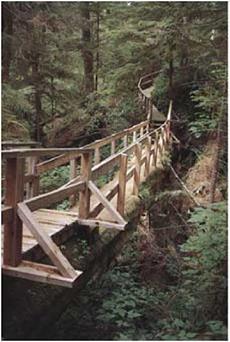 |
This bridge between two stretches of
boardwalk has made use of a naturally fallen cedar log. The upper surface has been levelled, and a railing has been fixed directly to the log using coach screws. Pacific Rim National Park, British Columbia, Canada.
30
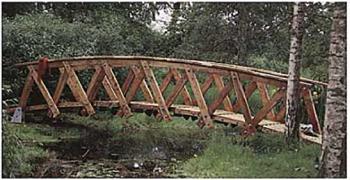 |
An arched bridge made from small sections of timber formed into a truss of great
strength. Developed for Scottish National
Heritage. (Courtesy David Downie)
|
|
31 This trail is waymarked by a series of square timber posts. Two grooves filled with different-coloured paint around the top of the post show that there are two routes. One branches away from the other further up the trail. The markings are highly visible, although the post is not a prominent colour.
32
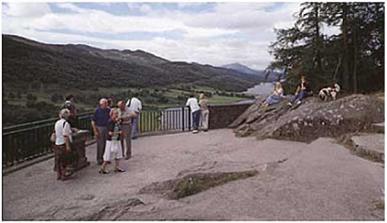 |
This viewpoint provides a spectacular view, but it is marred by the heavy urban design of the railing and the extensive use of concrete as a surfacing. Queen’s View, Tay Forest Park, Scotland.
|
|
33 All-terrain bikes are increasingly popular, but they can cause erosion, and they do not
always mix well with other trail users because of their speed.
34
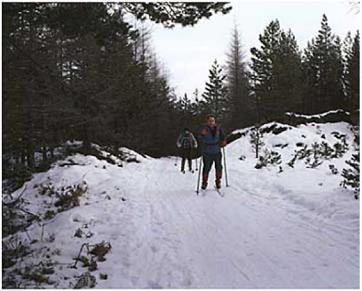 |
Cross-country skiers using snow – covered forest roads. The route and experience along it require the same design attention as hiking trails. Glenmore Forest Park, Scotland.
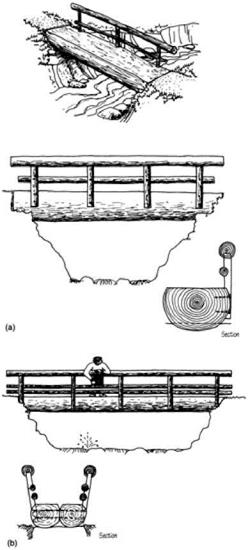 |
Two construction methods for log bridges: (a) A single log, sawn across to give a flat walking surface with a round timber handrail bolted along one side. (b) Two narrower logs bolted together with a handrail on both sides.
In the absence of a single large log, two or more may be laid side by side, and roughly squared on the top to give a flat surface. To prevent movement the logs should be bolted together at intervals. Handrails may be added (supported by outrigger beams—see diagrams) for lateral strength. Narrow gaps between the logs should be left to allow water to drain away.
If a greater width of bridge is required, a decking may be added of planks sawn or split from logs laid across the log beams with narrow spaces between. The surfaces of the logs need to be level, otherwise the decking will be uneven. Durable or pressure – treated timber should be used for the decking, whose maintenance is a priority.

